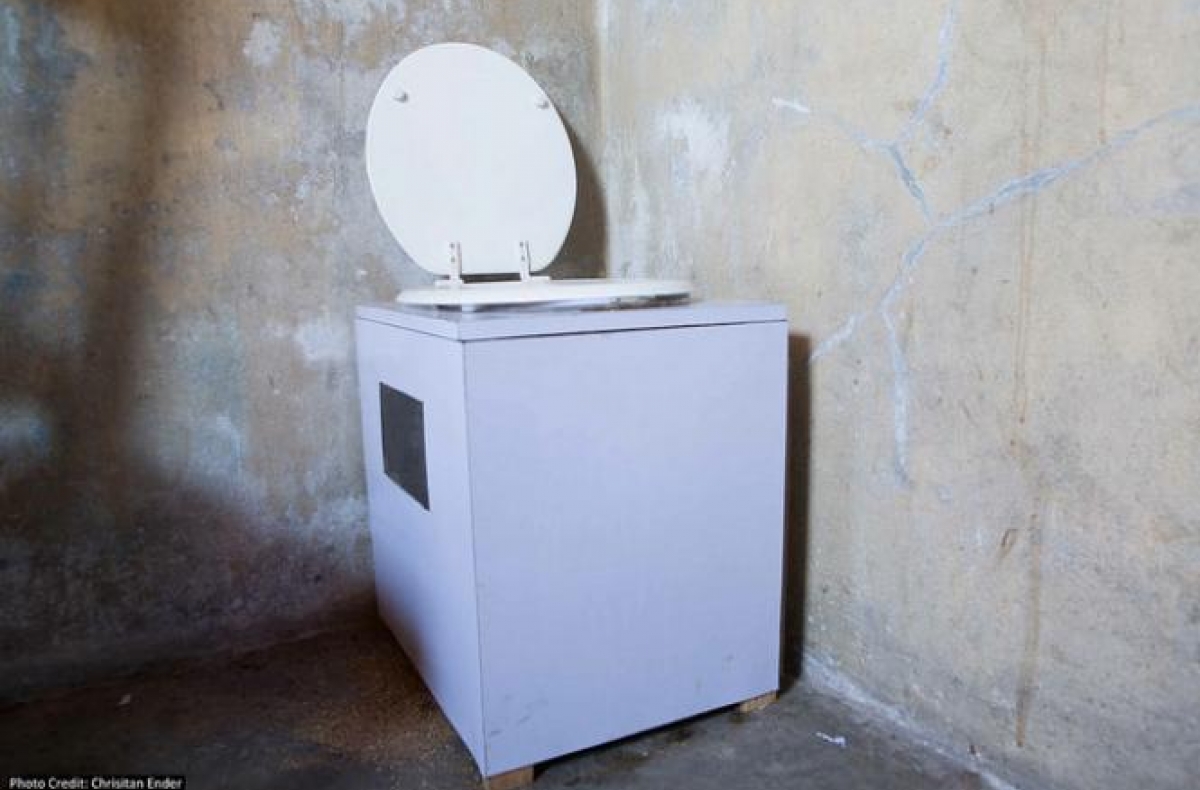Symposium takes closer look at container-based sanitation
WHD Director Jenna Davis discusses possible solution to sanitation challenges in world's urban slums.
March 11, 2016

Where will Earth’s next billion residents poop?
That question was on the minds of many attending this year’s gathering of water, health and sanitation scholars at the Colorado WASH symposium, March 1-2 in Boulder.
Jenna Davis, director of Stanford's Program on Water, Heath and Development, spoke at the event. Attendees paid close attention to her descriptions of a pilot container based-sanitation (CBS) model developed in Haiti by Stanford research team re.source and the nonprofit group SOIL.
“The Haiti pilot built on SOIL’s many years of offering community-level CBS services through high quality community toilets,” Davis said. “SOIL director Sasha Kramer and her team co-created this pilot with us from the start, and were essential in helping us deploy and study this model in the community.”
The model centers on portable, affordable household toilets that capture waste in a removable container; divert wash water and urine; and use nontoxic additives for odors and pests. The toilets are swapped out when full by a regularly scheduled service which transports the solid waste to a processing facility to be treated and turned into valuable products such as compost. These end-products are often sold providing an income source for the sanitation service.
Such innovative approaches to managing bodily waste are central to one of the retooled U.N. Sustainable Development Goals for 2030 (SDG 6.3), which calls for “private, basic sanitation facilities where excreta are safely disposed in situ or transported to a designated place for treatment and/or safe disposal.”
Meeting that goal is not so simple in low-income regions like Haiti, where residents of urban slums must choose among crowded public toilets that close at night, open defecation or expensive private pit latrines. Narrow, unplanned street layouts make access by suction trucks impossible, and frequent flooding sends raw sewage into homes. Of the 2.5 billion people who currently lack access to adequate sanitation, about 750 million live in cities.
The challenges of meeting their sanitation needs – which can range from prohibitively high initial costs to the need for reliable water and energy supplies to intractable local politics – was a recurring theme at the symposium. The CBS concept addresses some of those persistent hurdles, Davis said, describing the model’s low capital costs relative to pit latrine and piped sewer approaches. CBS is more attractive to local politicians as it does not require significant infrastructure. Additionally, the water, energy and space requirements of CBS are less than both pit latrine and piped sewer options.
Contact Information
Rob Jordan
Associate Editor, Environment and Sustainability, Woods Institute
rjordan@stanford.edu


